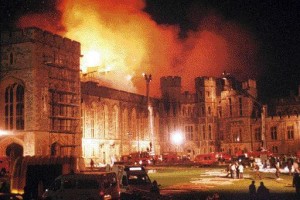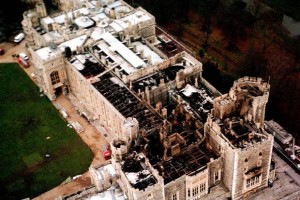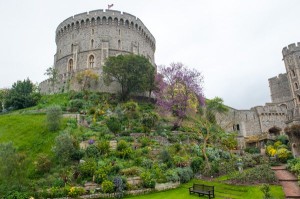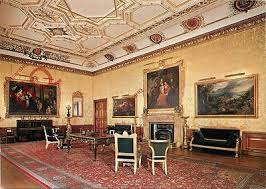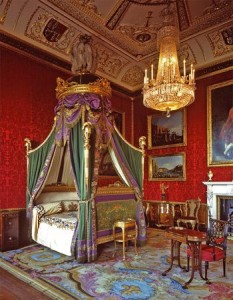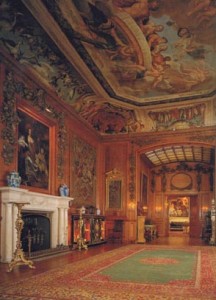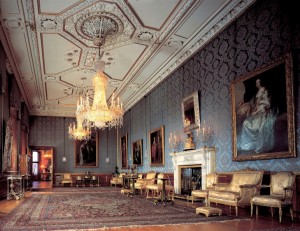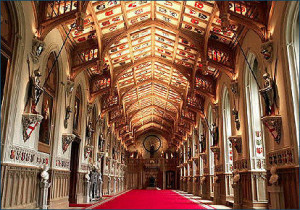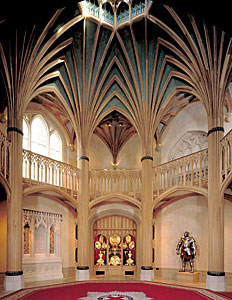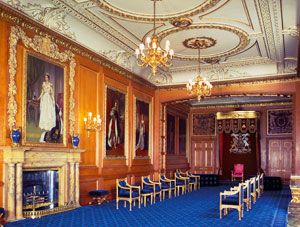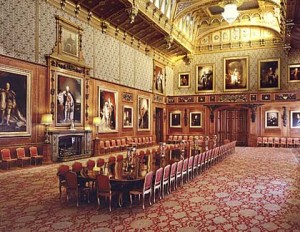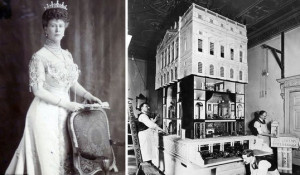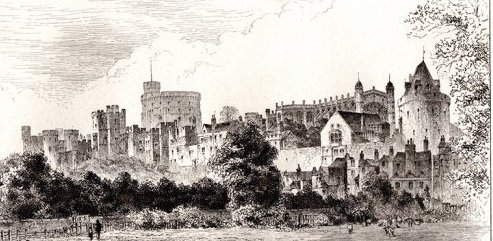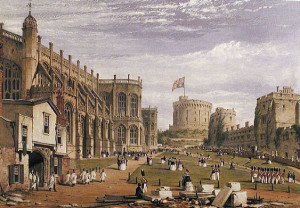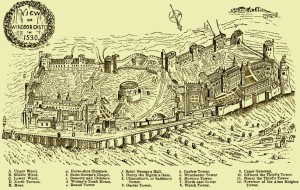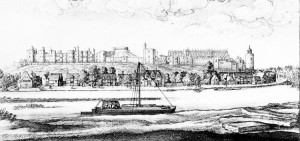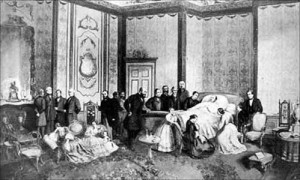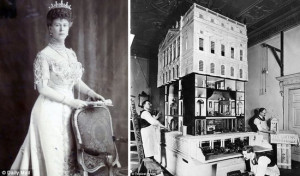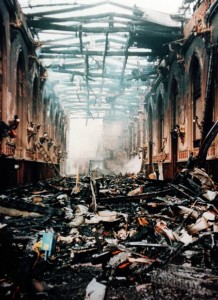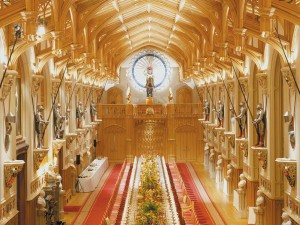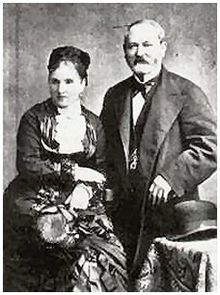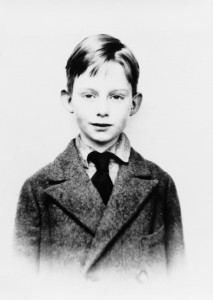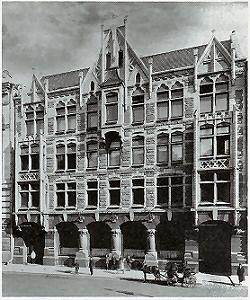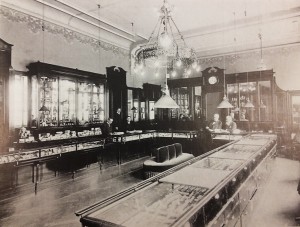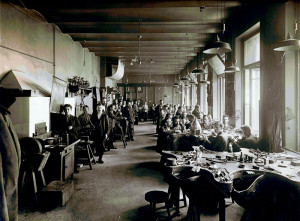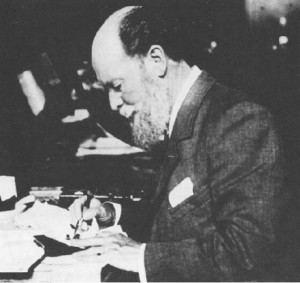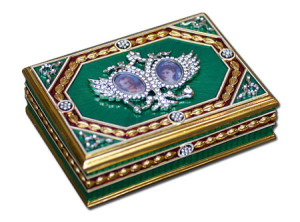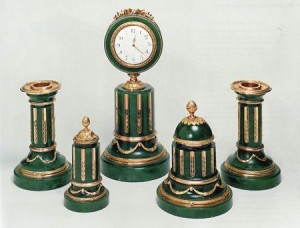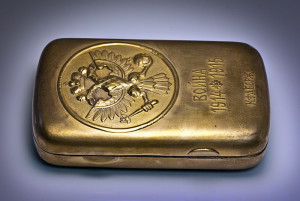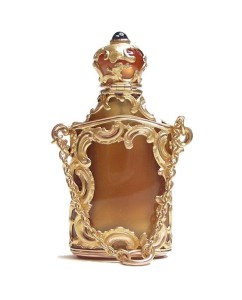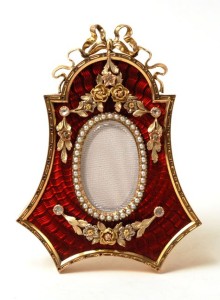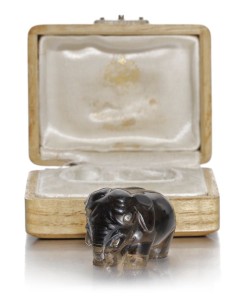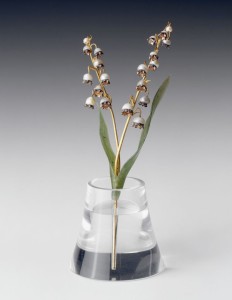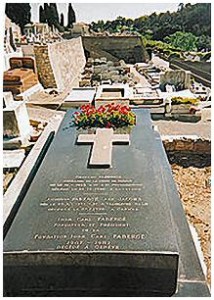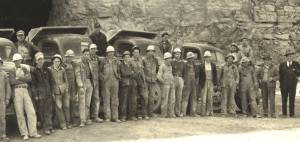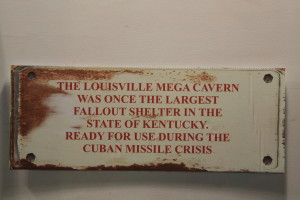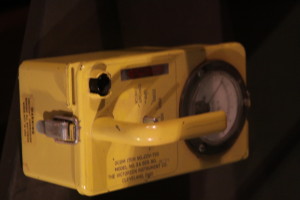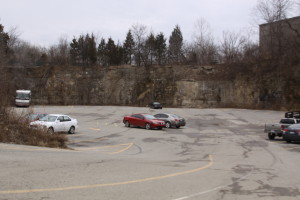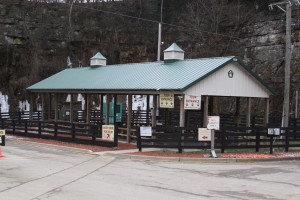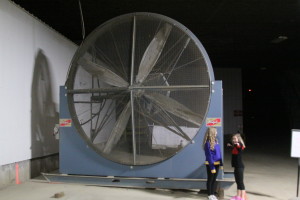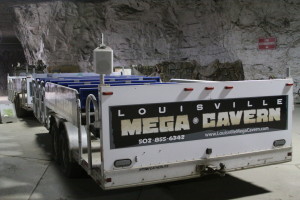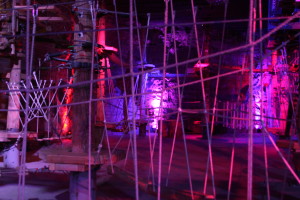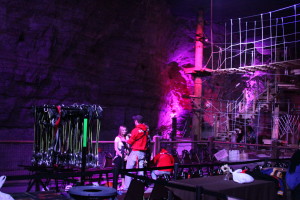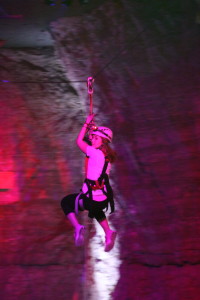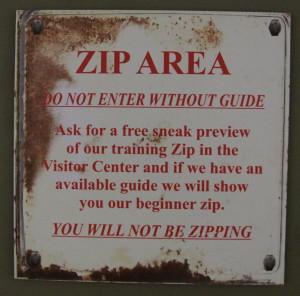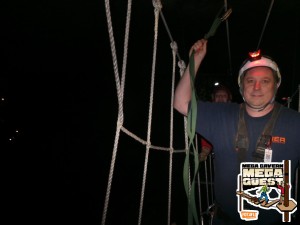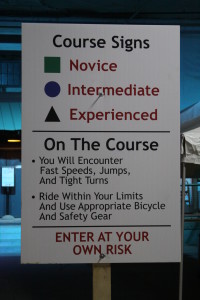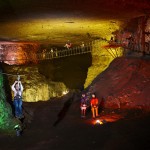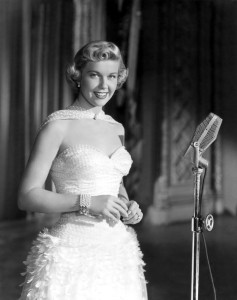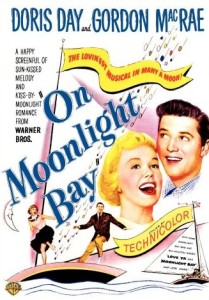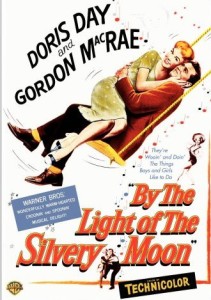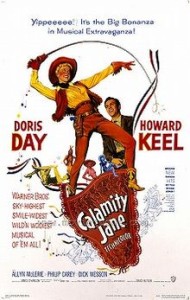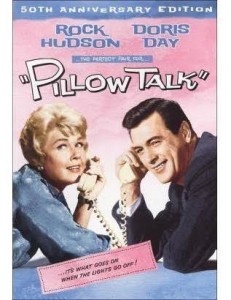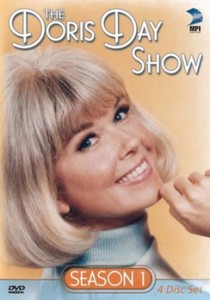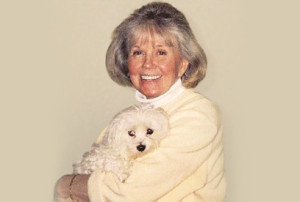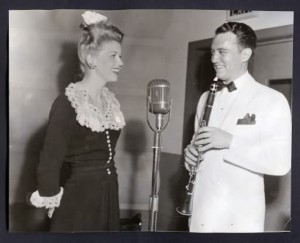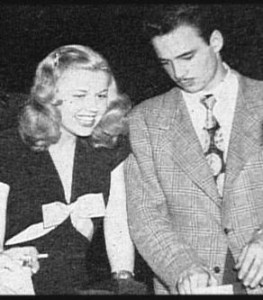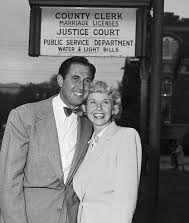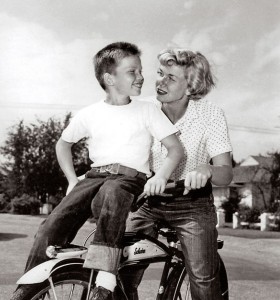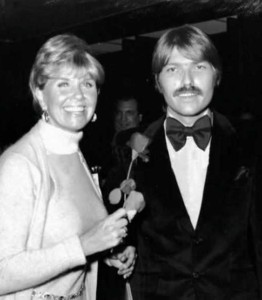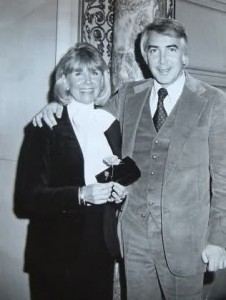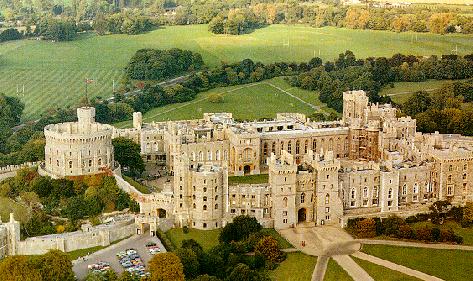 Windsor Castle has been an official Royal residence for 39 British monarchs including the present Queen Elizabeth II. In Windsor Castle – Part One, I discussed the history of Windsor Castle dating back over 1000 years to when it was built shortly after the Norman Conquest. In Part Two, I will discuss the architecture of the main buildings and give a short tour of some of the rooms inside Windsor Castle as well as a brief description of St. George’s Chapel.
Windsor Castle has been an official Royal residence for 39 British monarchs including the present Queen Elizabeth II. In Windsor Castle – Part One, I discussed the history of Windsor Castle dating back over 1000 years to when it was built shortly after the Norman Conquest. In Part Two, I will discuss the architecture of the main buildings and give a short tour of some of the rooms inside Windsor Castle as well as a brief description of St. George’s Chapel.
In general, Queen Elizabeth frequently spends weekends at Windsor Castle when she is not required to be in London for formal appearances or special occasions. The castle is located about 22 miles from Buckingham Palace, the monarch’s official London residence. In the spring, every year during the Easter season (April – March), the Queen will remain at the castle for several weeks. In June the Order of the Garter ceremony takes place at St. George’s Chapel and prior to the service a luncheon is held in the Waterloo Chamber in Windsor Castle. The Royal Ascot horse races are also held in June and of course the Queen, Prince Philip and the other members of the Royal family attend the festivities. At various times throughout the year Windsor Castle is also used to host State Visits for foreign heads of state and diplomatic dignitaries.
A tour of Windsor Castle
Windsor Caste is a British Royal residence located on 13 acres in Berkshire about 22 miles from Buckingham Palace, London. The castle consists of three distinct sections known as the Middle Ward, the Upper Ward and the Lower Ward. The ancient fortifications were built as a line of defensive by William the Conqueror, a Royal palace was first built and then expanded over several centuries with an adjacent small town with shops and a nearby railroad station.
The Middle Ward
The Middle Ward is considered the heart of Windsor Castle with a stone tower, known as the keep, which is set upon a large mound. The mound is approximately 50 feet high and the keep, fittingly called the Round Tower, is 30 feet across and was originally built in 1170 by King Henry II. Throughout the years it has been rebuilt several times and is currently being used to store the Royal Archives. To the east of the Round Tower is the Norman Gatehouse which was built in the 14th century and features a vaulted ceiling decorated with medieval carvings and it serves as an impressive entrance into the Upper Ward of Windsor Castle.
The Upper Ward
The Upper Ward is surrounded by a wall made of Bagshot Heath stone which encloses several buildings forming a central quadrangle. In this area of Windsor Castle the State Apartments are located on the north side with the private rooms of the Royal Family to the south side. Adjacent to the Upper Ward is the North Terrace which overlooks the River Thames and was built in the 17th century by King Henry VIII.
Visitor tours enter the State Apartments through the doors off the North Terrace. During the reign of King Charles II the State Apartments were renovated to rival the rooms of Versailles in France, the ceilings were originally painted by Antonio Verrio and decorative carvings by Grinling Gibbons. Today, the State Apartments are furnished with artwork from the Royal Collections, including paintings by Rembrandt and Rubens.
The Grand Staircase features a timbered lantern ceiling which provides plenty of light and a stone base comprising of four stone arches. Located on the landing of the Grand Staircase is a large marble statue of King George VI by Francis Chantrey and several artfully arranged military weapons hanging on the walls and suits of armor displayed. After descending the Grand Staircase, visitors enter the Grand Vestibule with a beautiful plaster fan vaulted ceiling accented with foliage and angels created by Francis Bernasconi. To the left is a large marble statue of Queen Victoria depicted with her collie named Sharp, the statue is by J.E. Boehm. Also displayed in the Grand Vestibule are more military arms and positioned against the walls are several Gothic-style cabinets displaying another military collection including the lead bullet that killed Admiral Lord Horatio Nelson in the Battle of Trafalgar which established the naval supremacy of Britain during the eighteenth century.
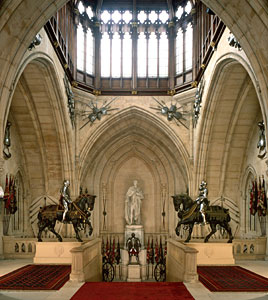
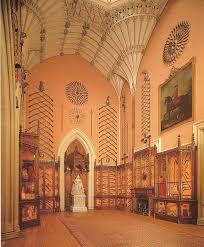
The next set of State Apartments rooms were designed by Jeffry Wyatville during the reign of King Charles II. This area of Windsor Castle was originally used for State officials and visiting dignitaries; later guest accommodations were moved to the south side of the Castle. Today, visitors on the Windsor Castle tour will pass through the Ante Throne Room and into the King’s Drawing Room. During the 19th century the King’s Drawing Room was known as the Rubens Room because Prince Albert decorated this room with several paintings by the renowned Flemish Baroque painter Peter Paul Rubens which are part of the permanent Royal Collection. The room also features an elaborate plaster ceiling decorated with the coat of arms of King George IV and the Garter Star. The carved cornice and the paneled doors were created by Grinling Gibbons and the Siena marble chimneypiece was designed by Wyatville. (Royal Note: The bay windows in the King’s Drawing Room offer visitors a great view of Eton located across the River Thames where just a few years ago both Prince William and Prince Harry attended the elite boarding school)
Completing the King’s suite of rooms are the King’s Bed Chamber, the King’s Dressing Room, the King’s Closet and the King’s Dining Room. The first of two rooms of note is the King’s Bed Chamber which features walls covered in red damask, a plaster ceiling decorated with the Stuart coat of arms, a carved cornice by Gibbons and a white marble chimneypiece by William Chambers that was originally used in Buckingham House. The elaborate bed by French woodworker Georges Jacob is draped with green and purple fabric similar to those used when French Emperor Napoleon III came for a State visit in 1855; the intertwined initials of both Napoleon and his Empress Eugenie are embroidered on a fabric panel at the foot of the bed.
The second room of note is the King’s Dining Room originally used by King Charles II when he dined in front of the pubic on specific days of the week. But unlike the other rooms of the State Apartments that had ceilings painted by Verrio, in Windsor Castle there are only three that have survived, and this one appropriately depicts a banquet of the gods featuring magnificent fruit, fowl and fish paintings. Once again the intricate wood carvings in the room are by Gibbons and two large Brussel tapestries showing the coat of arms of King William III and Queen Mary II hanging on the walls were designed by Daniel Marot.
The Queen’s suite of rooms in the State Apartments included the Queen’s Audience Chamber, the Queen’s Presence Chamber, the Queen’s Guard Chamber and finally the Queen’s Ballroom. The Queen’s Ballroom is where, during a State Visit to Windsor Castle, visiting foreign heads of State are received by the British monarch and the Diplomatic Corps. This large room was extensively renovated by Wyatville for King William IV and the three beautiful glass chandeliers were originally commissioned by King George III. As mentioned previously, during the reign of Queen Victoria her husband, Prince Albert, grouped many of the paintings in the Royal Collection by the prominent artist to decorate several of the rooms in Windsor Castle and in this case in the Queen’s Ballroom has on display several paintings by the Flemish Baroque artist Anthony Van Dyck including “Charles I in Robes of State” (1636).
Another room visitors will see on the tour of Windsor Castle is the magnificent 180 foot long St. George’s Hall. In the 1820s when Wyatville was renovating this part of Windsor Castle he choose a Gothic-style of decoration with the walls hung with military weapons and suits of armor on display. The original plaster ceiling had been created to resemble wooden beams and decorated with the coat of arms of the Knights of the Order of the Garter. Then, several centuries later, in 1992 the Windsor Castle fire completely destroyed the ceiling and the east wall of St. George’s Hall. (More on the 1992 Windsor Castle Fire later in this post) A new oak hammerbeam roof was constructed and the shields of the Knights of the Garter were painstakingly recreated and repositioned on the new ceiling. (Royal Note: Another important addition which was part of the restoration is an equestrian figure positioned at the east end St. George’s Hall known as the King’s Champion. In centuries past the King’s Champion would ride into the Coronation Banquet in Westminster Hall and throw down his gauntlet three times in a challenge to anyone that would deny the new monarch, the last time this was done was at the Coronation of King George IV in 1821.
The Windsor Castle tour continues into the Semi-State Apartments which were originally the private apartments created for King George IV by the architect Wyatville The rooms of the Semi-State Apartments include the Lantern Lobby, the Green Drawing Room, the Crimson Drawing Room, the State Dining Room, the Grand Reception Room, the Garter Throne Room and the Waterloo Chamber. Unfortunately these rooms were severely damaged by the fire of 1992, later to be completely restored, and are currently used by the present Queen for official entertaining when in residence at Windsor Castle. Below are highlighted some of the rooms of the Semi-State Apartments.
One room of note is the Lantern Lobby which is located on the former site of Queen Victoria’s Private Chapel and the unique octagonal-shaped room is at the northeast corner of the Castle situated between St. George’s Hall and the Royal Family Apartments. It is here where the devastating 1992 fire of Windsor Castle started and a stone plaque commemorates the event and notes the date of the completion of the five year restoration. The former chapel was completely gutted and eight oak columns support an intricate Gothic-style vaulted ceiling with a central lantern. The inlaid floor is set in English marble and features the Garter Star in the center of the room.
Another room in the Semi-State Apartments, which can be seen from the Crimson Drawing Room, is the Green Drawing Room. This room survived the 1992 fire but was heavily damaged by the water used to extinguish the blaze. The beautiful Axminster carpet was originally displayed at the Great Exhibition of 1851 as a fine example of English manufacturing before it was installed in the Green Drawing Room during the reign of Queen Victoria, the carpet survived the fire but it is in such a fragile condition that the room is closed to visitors on the Windsor Castle tour. (Royal Note: The Green Drawing Room is the setting of the painting “The Family of Queen Victoria” which was painted in 1887 by Laurtis Regner Tuxen to commemorate the occasion of the Queen’s Jubilee and features Queen Victoria and her large extended family)
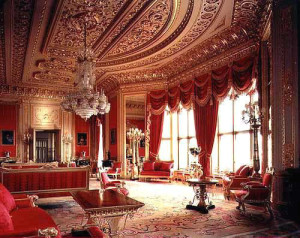
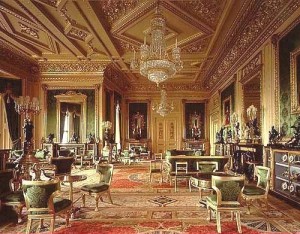
The Garter Throne Room is one of the most historic rooms in Windsor Castle and this is where for centuries the new Knights and Ladies of the Order of the Garter are invested by the British monarch before their installation ceremony in St. George’s Chapel. The previous painted ceiling by Verrio was replaced by a moulded plaster ceiling designed by Wyatville which appropriately features the insignia of the Order of the Garter. At one end of the room is a Giltwood canopy which dates back to the late 18th century which is hung with beautiful velvet hangings. On a raised platform sits a Giltwood throne originally made for the 1953 Coronation of Queen Elizabeth II and hung in the Garter Throne Room is a State portrait by James Gunn which depicts the Queen dressed in her Coronation robes and dress.
The Waterloo Chamber is one of the largest rooms in Windsor Castle and it is dedicated to the 1815 military defeat of Napoleon Bonaparte at Waterloo by British forces which were led by the Duke of Wellington. Wyattville had the previous Horn Court of King Edward III enclosed with a ceiling designed to resemble the timbers of a ship. The paneled walls were created by Gringling Gibbons. The Indian carpet, said to be the largest seamless carpet in existence, was created to commemorate Queen Victoria’s Golden Jubilee and luckily the immense carpet was able to be saved during the 1992 fire when it took 50 soldiers to roll-up and remove it from Windsor Castle.
King George IV commissioned Thomas Lawrence to paint portraits of the monarchs, statesman and military commanders who contributed to the victory over Napoleon at Waterloo. The large portrait of the 1st Duke of Wellington hangs on the east wall of the Waterloo Chamber and additional portraits hung around the room included Tsar Alexander I of Russia, King William III of Prussia and Emperor Francis I of Austria and Pope Pius VII as well as Emperor Napoleon II.
Set in the center of the Waterloo Chamber, running almost the entire length of the room, is the massive mahogany dining table created by Thomas Dowbiggin in 1846. Every year in June, Queen Elizabeth holds the Garter luncheon for the Knights and Ladies of the Order of the Garter. The magnificent tables is beautifully set with wonderful gilt silver, china place settings from the historic Royal Collection and elaborate floral decorations for the fifty to sixty invited guests.
The Lower Ward
The Lower Ward of Windsor Castle is located just west of the Round Tower through the Norman and is divided into two areas, the College of St. George comprising of residences for the Dean and Canons of Windsor located in the northern section and the historic St. George’s Chapel located in the southern section of the Lower Ward. The Gothic-style St. George’s Chapel completed in the 16th century is considered the spiritual home of the Order of the Knights of the Garter and is a Royal Peculiar meaning that it owes allegiance directly to the Sovereign. The interior wooden choir stalls have brass plates bearing the cost of arms of the individual Knights of the Garter from the past six centuries. Within St. George’s Chapel are the tombs of ten Sovereigns; including Henry VIII and two of his six wives, Catherine of Aragon and Jane Seymour, and King Charles I. In 2002, the funeral of Princess Margaret, the sister of Queen Elizabeth, took place at the Chapel and a few months later that same year Queen Elizabeth the Queen Mother was buried beside her husband, King George VI. On a more joyful occasion, in 1999 Prince Edward and Sophie Rhys-Jones were married in St. George’s Chapel and in 2005 the dedication and prayer service of Prince Charles, the Prince of Wales and Camilla Parker Bowles, the Duchess of Cornwall after they were married in a civil ceremony at the Windsor Guildhall. (For more information on St. George’s Chapel and the Order of the Garter, please click on the links)
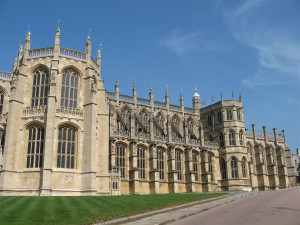
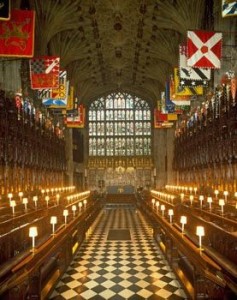
Other Windsor Castle points of interest
Queen Mary’s Dollhouse –
Displayed in a special room located in Windsor Castle is the Queen Mary’s Dollhouse which is considered one of the largest and most famous dollhouse in the world. It was originally built for Queen Mary, the Royal Consort of King George V, who is the grandmother of the current Queen Elizabeth and it was built between 1921 and 1924 by one of the leading British architects of the time, Edwin Lutyens, as a gift from the British people. It is a wonderful example of a miniature aristocrat’s house created on the scale of 1:12 (one inch to one foot). The house is filled with thousands of details, such as furniture, draperies and carpets which were made by finest English craftsmen and the dollhouse also is complete with electricity for lights, running hot and cold water and fully equipped bathrooms. The library is filled with original stories by well-known writers such as Arthur Conan Doyle, J.M Barrie and Rudyard Kipling which are bound into miniature books. In addition, the dollhouse is filled with fine china and silver, monogrammed linens and even miniature cars in the garage with engines that actually work. The dollhouse also features a hidden garden that is revealed when a large drawer beneath the main building is opened, the garden is a traditional English garden complete with miniature greenery and garden tools.
The 1992 Fire at Windsor Castle
The former site of Queen Victoria’s Private Chapel is where the 1992 disastrous Windsor Castle fire started and it has been reported that a work light had fallen and set fire to the curtains near the altar causing the fire that would quickly spread to other areas of the Castle. More than 200 firefighters battled the fire for over 12 hours and it was the worst disaster in the castle’s history. Luckily when the fire was first detected the castle staff was able to empty the rooms of many valuable paintings and decorative pieces. During the lengthy five year restoration process to repair the fire damage, the rooms in this area of Windsor Castle were rebuilt to resemble their original appearance using modern materials and concealing modern structural improvements whenever possible. It was a very costly project and at first it was said that the British taxpayers would finance the restoration but the public was outraged at the idea. Ultimately, it was decided that both Buckingham Palace and Windsor Castle would be partially opened for seasonal tours to raise the funds required for the restoration project. On November 20, 1997 Queen Elizabeth and Prince Philip held a ball to mark their 50th wedding anniversary and officially reopen Windsor Castle.
